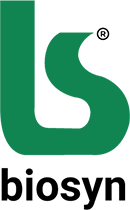Selenase® In Resuscitation
Scientific information On
Resuscitation
Causes Of Ischaemia:
- Cardiac / circulatory arrest due to:
- Coronary heart disease/coronary infarction (70 – 80%)
- Cardiomyopathy, myocarditis (10 – 15%)
- Other causes
- Global hypoxia during "no-flow"
- Reperfusion due/ to resuscitation ROSC
Risks After Reperfusion:
- Specific damage to heart, lung and brain tissue
- Hyperinflammation (= post resuscitation, sepsis-like syndrome)
- Endothelial damage
- SIRS
- Disturbance of microcirculation
Conventional Measures To Reduce Tissue Damage:
- Cardiac massage (earliest possible)
- Cardiac massage : ventilation → 30:2
- Volume replacement, vasoactive substances → however, up to date not sufficiently effective
Data On Selenium (Selenite, Some With Selenase®):
- SIRS / sepsis patients have low selenium levels, this correlates with the severity of the disease [Sakr et al. British Journal of Anaesthesia 98 (2007) 775-784]
- Selenium supplementation reduces mortality in SIRS/sepsis patients (SIC) [Angstwurm et al. Crit Care Med 35 (2007) 19]
- Selenium significantly improves neurological survival in patients with cardiac arrest [Reisinger et al. European Society of Cardiology (ESC) Congress Vienna 2007]
- High doses of selenium (100 g/kg) protects from neurodegeneration (animal model) [Ansari et al. Biological Trace Element Research 101 (2004) 73-86]
- High doses of selenium (100 g/kg) reduce cerebral cell death after ischaemia / reperfusion (animal model) [Yousuf et al. Brain Research 1141 (2007) 218-225] · Selenium levels are significantly reduced in patients after cardiac / circulatory arrest [Busch et al. DIVI (2008)]
Possible Actions Of Selenium Supplementation:
- Reduction of tissue damage in heart, lungs and brain, i.e. improved neurological outcome
- Prevention or minimisation of systemic inflammation (SIRS)
Suggested Timing And Dosage For Selenium Supplementation:
| Time point | Dosage |
|---|---|
| Bolus dose immediately upon transfer of the patient into ambulance | 1000 g Se/d as selenase® solution for injection |
| Bolus dose on admission to catheter lab | 1000 g Se/d as selenase® solution for injection |
| Continuous infusion over 4 days | 1000 g Se/d as selenase® solution for injection |
Information sheet on PLASTIC SURGERY, biosyn Arzneimittel GmbH, RSi 2008. According to a lecture given by Prof Dr med H Homann, Thieme Workshop 2008 entitled “Ischaemia and reperfusion an interdisciplinary challenge”. For personal use only.
Abbreviated Prescribing Information
selenase® 100 micrograms, solution for injection (50 micrograms/ml)
selenase® 500 micrograms, solution for injection (50 micrograms/ml)
- Active ingredient: sodium selenite pentahydrate.
- Composition: Each 2 ml ampoule/10 ml injection vial contains 100 micrograms/500 micrograms selenium as 333 micrograms/ 1.66mg sodium selenite pentahydrate (Na2SeO3 x 5H2O), corresponding to 50 micrograms/ml.
- Excipients: Sodium chloride, hydrochloric acid, Water for Injections.
- Indication: Proven selenium deficiency that cannot be offset from food sources.
- Posology and Administration: selenase® solution for injection is administered as an intramuscular or intravenous injection at a daily dose of 100 200 g (1.27 2.53 mol) selenium. If necessary, this dose can be increased to 500 g (6.33 mol) for a typical adult. No dosage adjustment is required for paediatric, renal or hepatic impairment patients.
- Contraindications: Selenosis.
- Interactions: Ensure that the pH value does not fall below 7.0 and that the solution is not mixed with reducing substances (e.g. vitamin C).
- Pregnancy and Lactation: There are no data from the use of selenase® in pregnant or lactating women.
- Undesirable Effects: None known to date when used as directed.
- Overdose: Counter measures include gastric lavage, forced diuresis, dialysis or administration of high doses of vitamin C.
- Pharmaceutical Precautions: Store below 25ºC.
- Legal Category: POM.
- Presentation: Cartons containing 10 x 2ml ampoules / 10 x10ml glass vials for single use.
- MA Numbers: PL 20437/0003, PL 20437/0004.
- MA Holder: biosyn Arzneimittel GmbH, Schorndorfer Str 32, D-70734 Fellbach, Germany.
- Date of Preparation: November 2004

